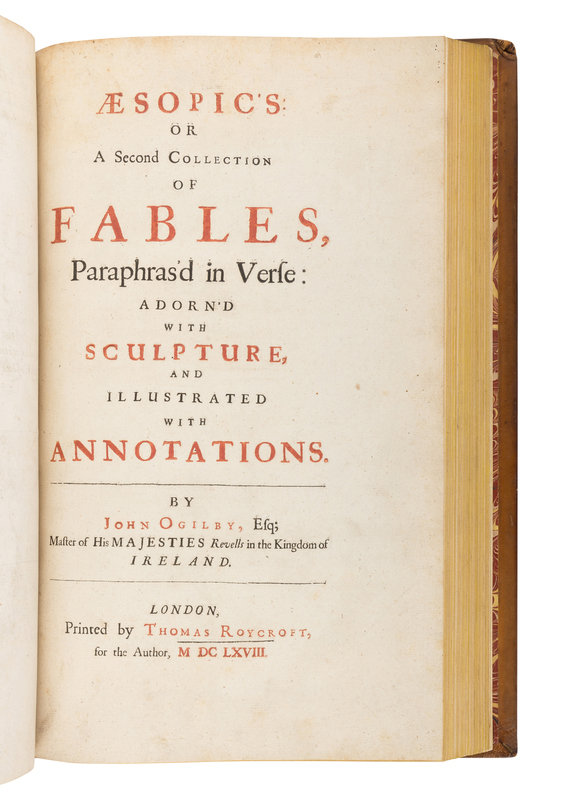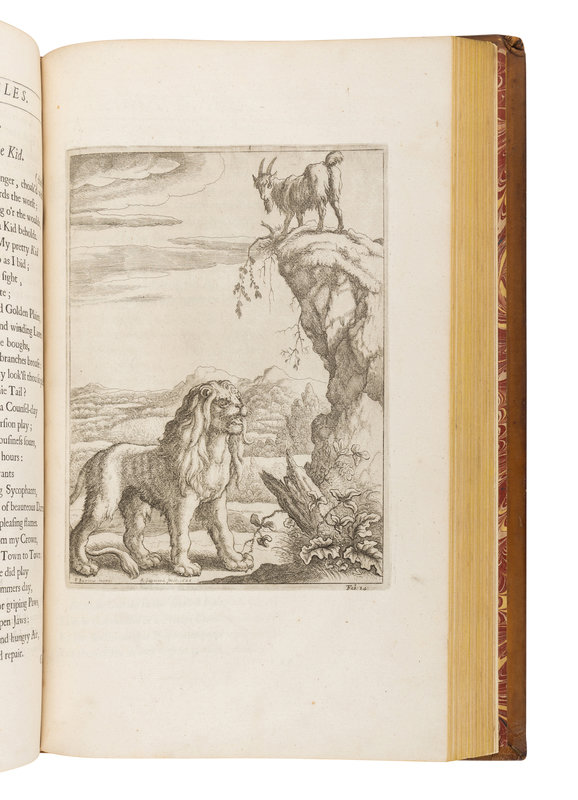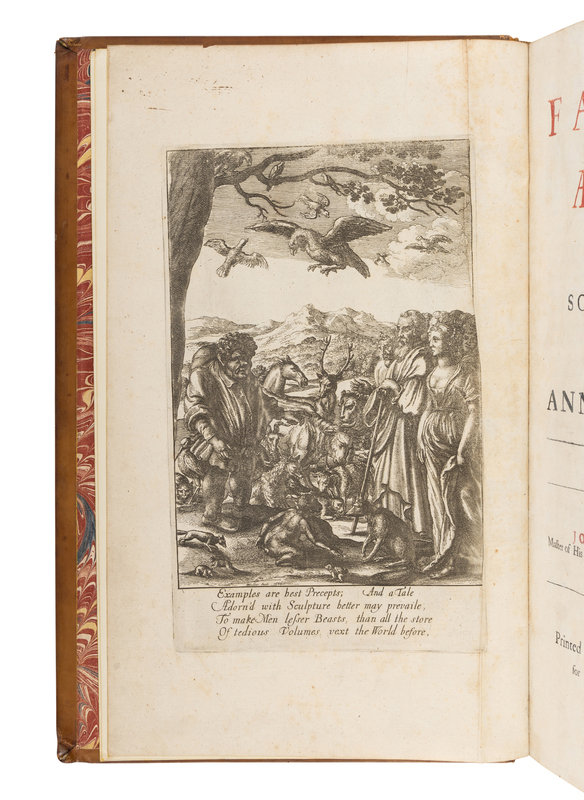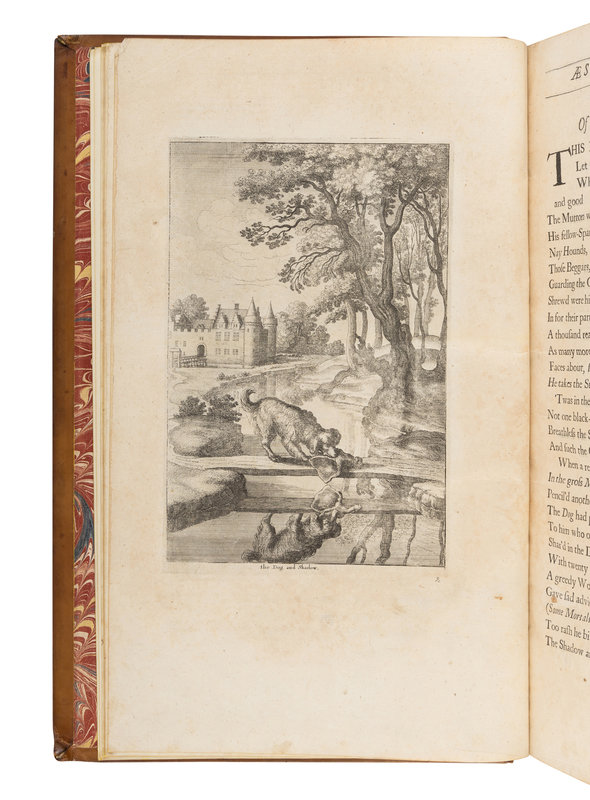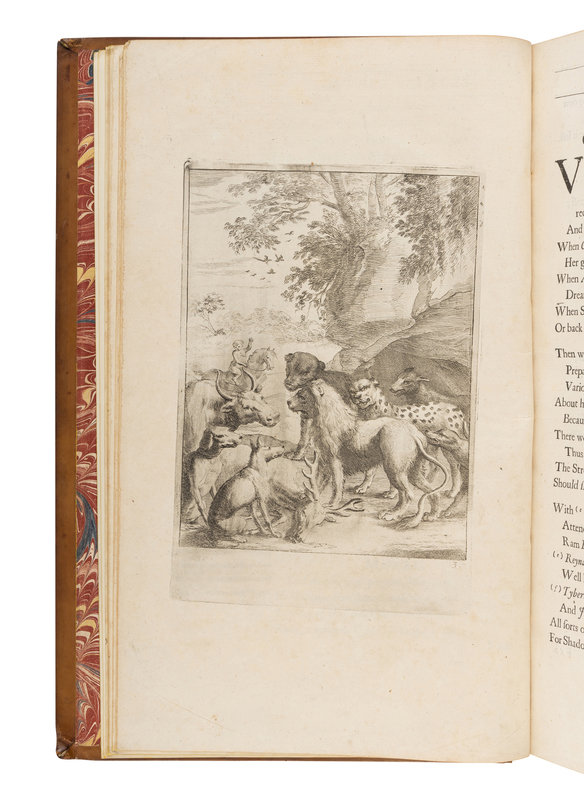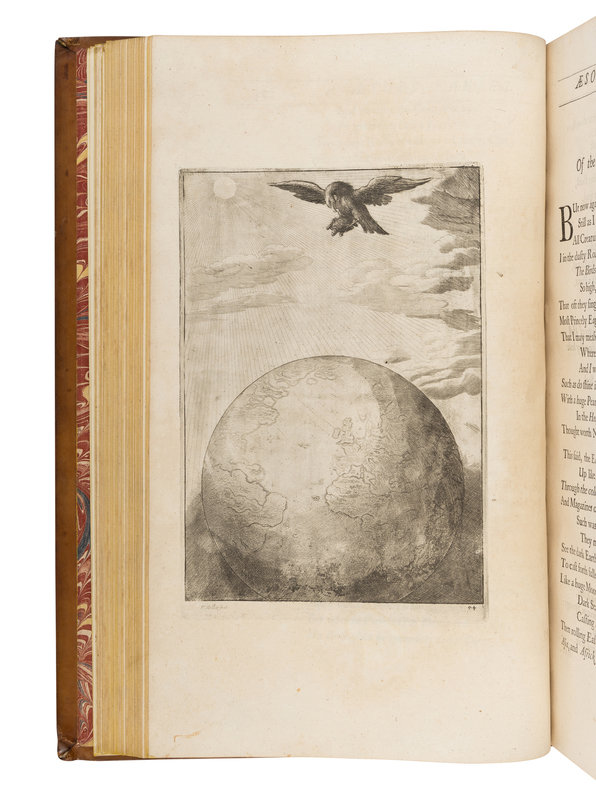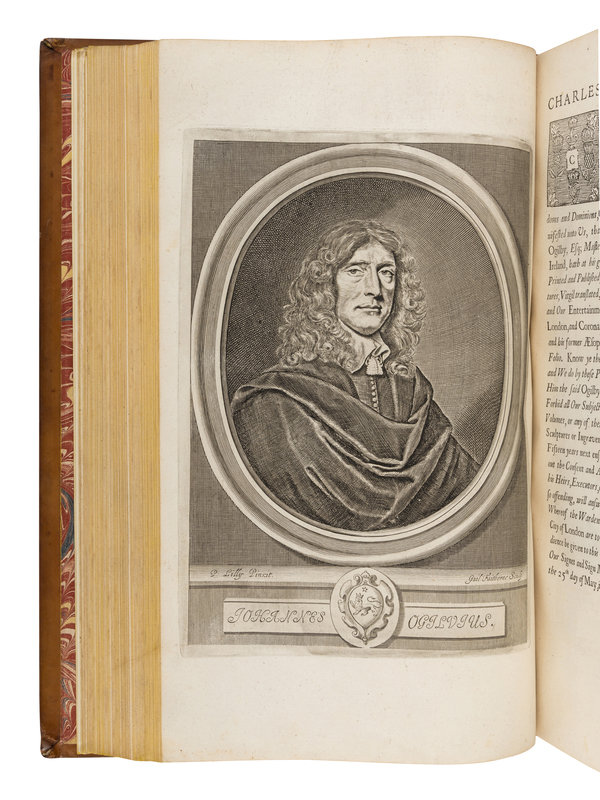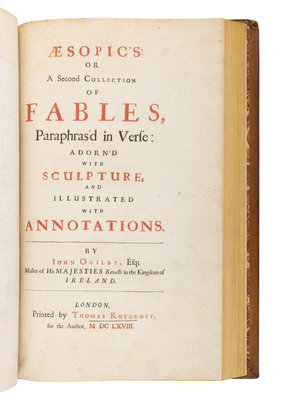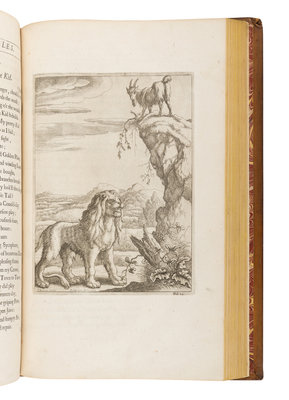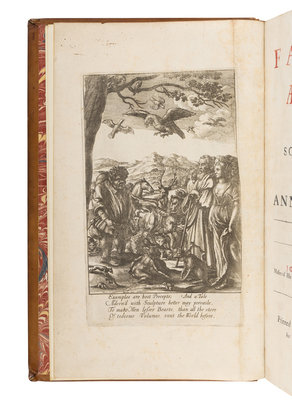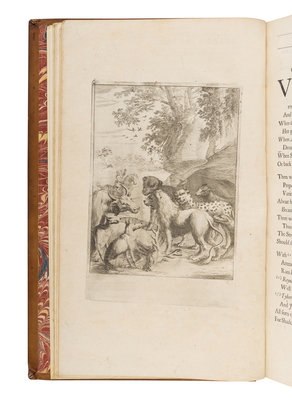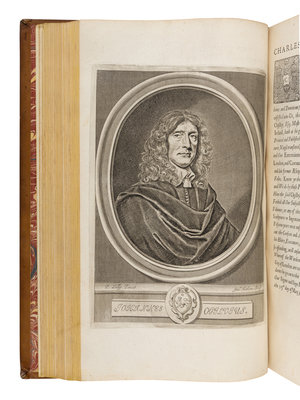2 volumes in one, Folio (416 x 257 mm). Titles printed in red and black, 151 engraved plates (including engraved frontispieces, one a portrait of Ogilby), numerous engraved vignettes and initials. (Slight soiling, and offsetting, some occasional spotting and soft creasing, plate 53 in vol. I with loss to outer head margin with repair just touching plate border with tiny repair to center outer margin verso; a few short tears with some repairs not affecting text or image, some repairs to inner marginal worming at the tail in Aesopic's not affecting text.) 19th-century polished calf, spine in 7 compartments with 6 raised bands, black morocco lettering-piece gilt in one, gilt decorated in the rest, board edges gilt-tooled, yellow-dyed edges (spine cover detaching with a short with a 3/4 inch tear in the 3rd compartment, front hinge starting, slight staining and wear with corners bumped).
Third edition, preceded by the first illustrated edition of Ogilby's translation of 1651. While the title-page states the "Second edition," this is the third since the stock of the original second edition of 1665 was lost in the Great Fire of 1666. Ogilby "bounced back in 1668, not merely with a reprinted of Aesop Paraphras'd (1665), but with the addition of three fresh works in the same volume" (Hodnett, Five Centuries, p. 60). Aesopic’s includes an additional 50 Aesopian tales as well as a retelling of the tales of Androcleus and The Ephesian Matron. "To call these versions paraphrases is misleading... they are original treatments of familiar themes. Ogilby gives free play to his imagination as he retells the fables with so many amplifications of homely detail and classical allusions" (Hodnett, Francis Barlow: First Master of English Book Illustration, p. 77-79). While engravers Wenceslaus Hollar, Josiah English, and Dirck Stoop contributed to the illustrations of this edition, Ogilby's neighbor, Francis Barlow assisted him with this republication of the second edition by designing about half the plates. "The great difference between Barlow's designs and those of his predecessors... is the extraordinary accuracy with which he recorded the appearance and movements of his animals and birds and the immense dignity that he bestowed on them.... in one crucial respect, Barlow is supreme among Aesopian fable illustrators - both animals and humans are always interacting, always expressive, always physically and emotionally involved in the action" (Hodnett, Five Centuries, p. 55). ESTC R19147 and R8782; Wing A-697 and A-698.
